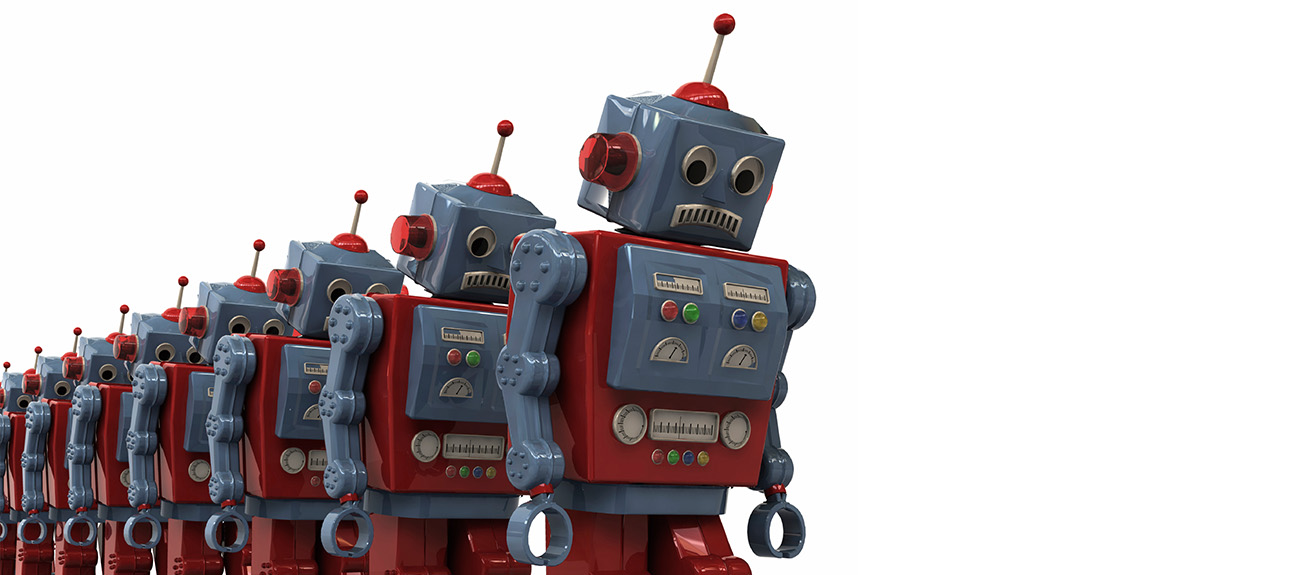
Rethinking strategy to escape commoditization
Look at almost any industry and you will see companies struggling to differentiate what they have to offer from everything else in the marketplace. So it’s hardly surprising that one of the most common complaints I hear from senior executives is “My product is becoming commoditized. Is there a way out?”
First some good news: executives who are prepared to rethink their approach can find a way out of the commoditization trap.
But that, of course, does not mean that it will be easy. Let’s start by reviewing two of the most common – and ineffective – reactions to commoditization.
The first is new features, which can be popular with customers but are no guarantee that they will want to pay extra for them. Either way it won’t be long before the company’s competitors copy the idea themselves, while low-cost versions from Asia will suddenly appear on the market and disrupt the entire industry.
Another common response is to move away from selling products alone to selling a product wrapped in services – which usually means upselling consulting – and calling it a solution. Sadly, this worn-out approach rarely helps companies to escape. So, what can they do?
Understand how modularity drives commoditization
The only way out of the trap is to reframe a situation so that you can make a fundamental shift in strategy. And the best starting point for this is understanding what drives commoditization: product modularity.
Modular products are made up of a number of components that share standard interfaces. A personal computer is a good example: it is made up of a hard drive, a motherboard, memory, a microprocessor, and various other bits and pieces, all of which share standardized interfaces. This standardization allows companies to specialize in individual components; as long as each company adheres to the standard when innovating and manufacturing its part, the final product will work perfectly.
Today, modular products are everywhere, from music-playing devices and automobiles to commercial aircrafts. Yet this is a relatively recent phenomenon. Until the late 1950s, mainframe computers were fully integrated, complex machines designed and manufactured for one specific purpose. Changes in any aspect of the machine required a complete overhaul of the entire design. This led to a proliferation of product lines, slow innovation progress and confusion among customers.
In the early 1960s IBM launched a modularized mainframe called the IBM 360. Its engineers defined a common standard to control how the components connected with each other; with this in place, engineers could work in parallel on each part. The speed of innovation and product improvement dramatically increased. Customers could mix-and-match product specifications according to their needs. Modularity, in other words, is an engineering approach that greatly facilitates continuous innovation.
But modularity comes with two unintended consequences. First, other companies can enter the industry by complying with the pre-defined standards. And the second is the globalization of production.
By lowering the barrier to entry, modularity allows manufacturers from emerging economies to grab part of the action, often taking advantage initially of cheap wages. Over time, however, these new entrants took on additional responsibilities for product design and component procurement. Today, contract manufacturers in Taiwan actually design and manufacture most of the world’s laptop computers. Some of these companies eventually developed enough capabilities to promote their own brands as well. There is little wonder why many Western PC firms find themselves besieged by new competitions. Products are becoming commoditized because everyone is able to make them, and often at less cost.
How companies can break out of the commodity trap
Perhaps managers can take a lesson from Mickey Mouse! When Disney entered China it faced a commodity hell, a market where competitors can avoid all product development costs and still achieve better speed to market! Endemic DVD piracy in China meant local competitors can produce products exactly the same as Disney’s, but without incurring any development cost. Sometimes pirated DVDs would appear even before the release of the official version, meaning competitors can also move faster!
Disney’s response was to re-think about the problems that consumers wanted solved and to reframe its own products accordingly. So, in 2008 it launched the first Disney English learning center in a theme park environment in Shanghai. The curriculum, aimed at children aged between two and ten, was developed in the US and is taught by native English-speaking trainers. It proved so popular that within three years it had expanded to more than 30 centers around the country.
Disney had discovered that parents who were unwilling to spend more than a few Yuan for a movie would happily dip into their private savings to secure the best education for their children. In other words, Disney reframed its product proposition and reintegrated the firm’s activities to tackle a pressing problem: In the globalizing world, how can I best equip my kids from a very young age?[1]
It is important to recognize that Disney did not simply come up with the right product; it moved into a new product category. A traditional marketing approach – such as targeting an existing client focus group, discussing with current distributors, or carrying out large scale customer surveys – would have yielded very little insight in this circumstance.
Executives who want to counter product commoditization must start by rethinking what problems their organizations could solve, then re-integrating the firm’s activities in a radically new way. They must be prepared to take a path that the firm never imagined it would.
Howard Yu is Professor of Strategic Management and Innovation at IMD, where he teaches in the Orchestrating Winning Performance program. His teaching and research activities focus on why and how some firms can sustain new growth while others cannot.
[1] Readers wishing to explore other examples should refer to Christensen, C. M., Anthony, S. D., Berstell, G. and Nitterhouse, D. “Finding the right job for your product.” MIT Sloan Management Review, 48(3), 2007: 38–47.
Research Information & Knowledge Hub for additional information on IMD publications

Set in 2024, the case describes the trajectory of Nike's success and how it had recently lost its way. The company was experiencing its worst slump in more than 10 years. Since 2020, CEO Donahoe oversaw a significant shift away from wholesale, wit...

This brief case exercise presents an increasingly common business scenario: An established player acquires a small, agile start-up to re-energize its value proposition. In this case, established global beauty giant UrbanLuxe acquires beauty start-...
in I by IMD
Research Information & Knowledge Hub for additional information on IMD publications
Research Information & Knowledge Hub for additional information on IMD publications
Research Information & Knowledge Hub for additional information on IMD publications
Research Information & Knowledge Hub for additional information on IMD publications
in I by IMD
Research Information & Knowledge Hub for additional information on IMD publications
Research Information & Knowledge Hub for additional information on IMD publications
Research Information & Knowledge Hub for additional information on IMD publications
Research Information & Knowledge Hub for additional information on IMD publications
Research Information & Knowledge Hub for additional information on IMD publications
Research Information & Knowledge Hub for additional information on IMD publications







